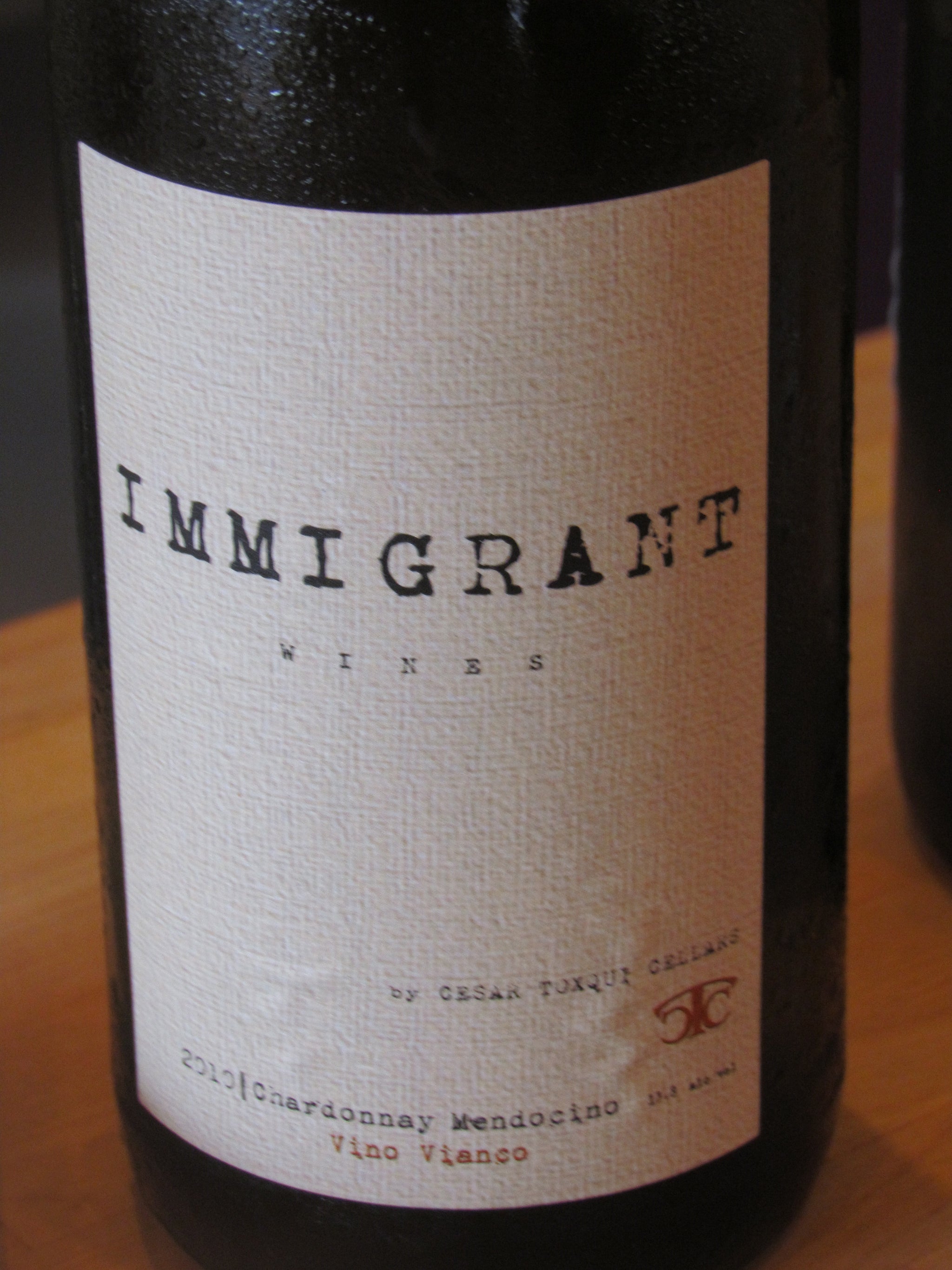The Grape Journey, from Vineyard to Wine Glass.

 GROW THE GRAPES: 90% of winemaking is done in the vineyard. If you have bad grapes, you won’t have good wine, no matter how talented a winemaker the winery employs. Good grapes are the result of good vineyard practices (i.e. hand pruned, hand picked, low yields on the vines, etc.) and the right growing site. Grape Vines are basically a weed..they’ll grow anywhere. Cabernet could grow in Hawaii…but it would taste bad. Therefore it’s important to plant the right grapes in the right soil with the right climate. This is often referred to as terroir.
Harvesting and Crushing: Once the grapes are ripe, they are harvested. Harvest is when the winemaker gets involved with the grape growing because they are the ones who choose when to pick the grapes. The winemaker makes this decision by measuring the grapes brix (brix is the percentage of the grape that is sugar. So if a grape is at 25 brix then that grape is 25% sugar). They look at the seeds in the grape..if they are green the grape is not ripe. They consider the weather. Is it going to rain? If so, how badly? And last, but not least, they taste the grape. If the grape tastes good, if it has enough brix, and if it is fully ripened, then the winemaker tells the vineyard manager its’ time to harvest.
When the grapes are harvested the grapes are crushed. A big mass produced winery does everything mechanically. The grapes are thrown into crusher/destemmer. They say grapes, but actually, all the bugs, rotten fruit, mice, lizards, and other flora and fauna that are in the vineyard will go in that crusher/destemmer as well. The juice will go into large stainless steel tanks for fermentation. The wine will “age” there too, with oak chips thrown in for flavoring. This is the wine that is most often found on your super market shelf.
However, when it’s a small winery, the process is very different. The grapes are first hand picked. The winemaker or vineyard owner is usually there to do a preliminary sort to pick out the lizards, mice, and rotten fruit. Then the grapes are taken to the crush pad where they are thrown onto a conveyor belt. This is where the grapes as whole clusters can be sorted. Next the grapes go through a destemmer that gently removes the grapes from the stem. Those individual grapes are put on yet another conveyor belt where they are sorted again. The grapes are then put in the stainless steel tanks for fermentation. The weight of the grapes will crush themselves.
Once fermentation has taken place (fermentation is the process of converting sugar into alcohol) the wine will either go into barrels are tanks to be aged.
Usually, red wine goes into barrels. Winemakers often refer to barrels as their “spice rack.” Barrels can give flavors of vanilla, cinnamon, caramel, spice, etc according to where they were grown, how tight the grain of the wood, and how the inside of the barrel is toasted.
The winemaker decides how long the wine should age. They also decide how to blend the wine and with what. Perhaps a cabernet needs better aromatics, if this is the case they might ad a little bit of Cabernet Franc.
Once the wine is aged and blended, it goes into a bottle where if it’s a red wine it is usually aged an additional year.
GROW THE GRAPES: 90% of winemaking is done in the vineyard. If you have bad grapes, you won’t have good wine, no matter how talented a winemaker the winery employs. Good grapes are the result of good vineyard practices (i.e. hand pruned, hand picked, low yields on the vines, etc.) and the right growing site. Grape Vines are basically a weed..they’ll grow anywhere. Cabernet could grow in Hawaii…but it would taste bad. Therefore it’s important to plant the right grapes in the right soil with the right climate. This is often referred to as terroir.
Harvesting and Crushing: Once the grapes are ripe, they are harvested. Harvest is when the winemaker gets involved with the grape growing because they are the ones who choose when to pick the grapes. The winemaker makes this decision by measuring the grapes brix (brix is the percentage of the grape that is sugar. So if a grape is at 25 brix then that grape is 25% sugar). They look at the seeds in the grape..if they are green the grape is not ripe. They consider the weather. Is it going to rain? If so, how badly? And last, but not least, they taste the grape. If the grape tastes good, if it has enough brix, and if it is fully ripened, then the winemaker tells the vineyard manager its’ time to harvest.
When the grapes are harvested the grapes are crushed. A big mass produced winery does everything mechanically. The grapes are thrown into crusher/destemmer. They say grapes, but actually, all the bugs, rotten fruit, mice, lizards, and other flora and fauna that are in the vineyard will go in that crusher/destemmer as well. The juice will go into large stainless steel tanks for fermentation. The wine will “age” there too, with oak chips thrown in for flavoring. This is the wine that is most often found on your super market shelf.
However, when it’s a small winery, the process is very different. The grapes are first hand picked. The winemaker or vineyard owner is usually there to do a preliminary sort to pick out the lizards, mice, and rotten fruit. Then the grapes are taken to the crush pad where they are thrown onto a conveyor belt. This is where the grapes as whole clusters can be sorted. Next the grapes go through a destemmer that gently removes the grapes from the stem. Those individual grapes are put on yet another conveyor belt where they are sorted again. The grapes are then put in the stainless steel tanks for fermentation. The weight of the grapes will crush themselves.
Once fermentation has taken place (fermentation is the process of converting sugar into alcohol) the wine will either go into barrels are tanks to be aged.
Usually, red wine goes into barrels. Winemakers often refer to barrels as their “spice rack.” Barrels can give flavors of vanilla, cinnamon, caramel, spice, etc according to where they were grown, how tight the grain of the wood, and how the inside of the barrel is toasted.
The winemaker decides how long the wine should age. They also decide how to blend the wine and with what. Perhaps a cabernet needs better aromatics, if this is the case they might ad a little bit of Cabernet Franc.
Once the wine is aged and blended, it goes into a bottle where if it’s a red wine it is usually aged an additional year.
 All these decisions translate directly into what is in your glass and whether or not you’ll like it. You might not like the loud spicy notes that American Oak gives wine. Or you may love a chardonnay that smells like crème brulee. Maybe you love the crisp sharp lines that stainless steal aging gives Sauvignon Blanc. How the wine is made has a lot to do with whether or not you’ll like the wine. Take the time to ask about the winemaking process when visiting wineries, you’ll not only increase your wine knowledge, but you’ll begin to figure out what you like and why.
For any additional questions please feel free to respond to this post or email us directly at info@vinolatinowineclub.com
All these decisions translate directly into what is in your glass and whether or not you’ll like it. You might not like the loud spicy notes that American Oak gives wine. Or you may love a chardonnay that smells like crème brulee. Maybe you love the crisp sharp lines that stainless steal aging gives Sauvignon Blanc. How the wine is made has a lot to do with whether or not you’ll like the wine. Take the time to ask about the winemaking process when visiting wineries, you’ll not only increase your wine knowledge, but you’ll begin to figure out what you like and why.
For any additional questions please feel free to respond to this post or email us directly at info@vinolatinowineclub.com
Leave a comment
Comments will be approved before showing up.




